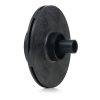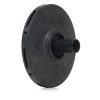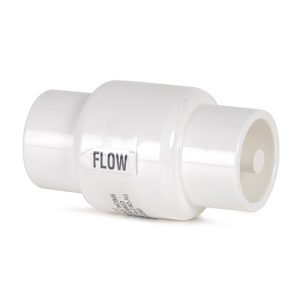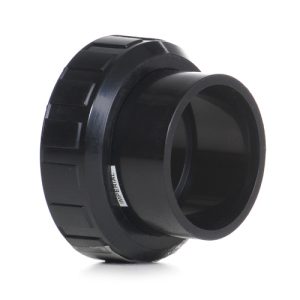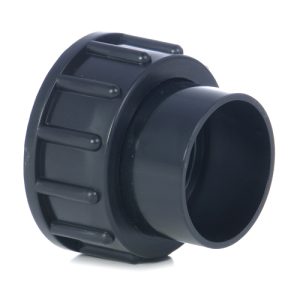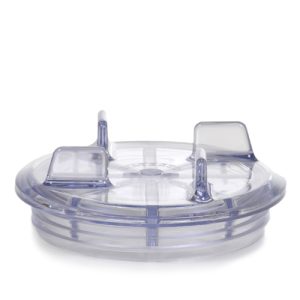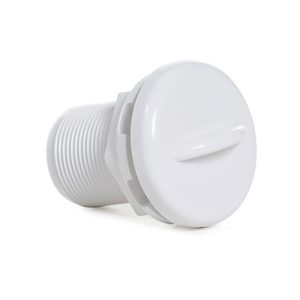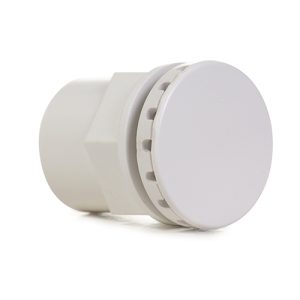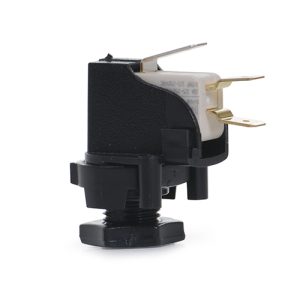Aquamite Pump 0.75hp Impellor
£66.98 Inc VAT
Out of stock
Want to be notified when this product is back in stock?
Aquamite Pump 0.75hp Impeller
High-Performance Circulation Component for Mid-Range Pumps
As a retailer of pool and spa parts, I stock this genuine replacement impeller specifically for Aquamite 0.75hp pumps. This larger impeller is engineered to work with the increased power of 0.75hp motors, delivering the higher flow rates needed for medium-sized pools while maintaining efficient operation.
What is a Pump Impeller?
The impeller is the rotating heart of your pump that converts motor power into water movement. This disc-shaped component with precisely curved vanes spins at approximately 3,450 rpm, creating the centrifugal force that circulates water through your entire pool system—from skimmers through the filter and back to the pool.
For 0.75hp motors, the impeller is larger than those used on smaller pumps like the 0.33hp or 0.50hp models. The increased diameter and vane design allow it to move significantly more water, matching the motor’s higher power output to deliver the flow rates required for effective circulation in medium to large residential pools.
How the 0.75hp Impeller Performs
As the motor spins the impeller, water enters through the central eye and is immediately caught by the curved vanes. The centrifugal force generated by the spinning impeller throws water outward at high velocity, creating a low-pressure zone at the center that extends through the suction plumbing back to the pool.
Atmospheric pressure pushes water from the pool into this low-pressure area, while the high-velocity water at the impeller’s outer edge is captured by the pump volute. The volute’s spiral design converts this velocity into pressure—the pushing force that drives water through the filter, heater, and back to the pool through the return jets.
The 0.75hp impeller moves substantially more water than smaller impellers, typically delivering flow rates between 60-80 gallons per minute depending on system resistance. This increased capacity makes it suitable for pools that require faster turnover rates for proper filtration and chemical distribution.
Signs Your Impeller Needs Replacement
Dramatically reduced water flow despite the motor running normally indicates impeller problems. If your return jets have weakened significantly or filter pressure has dropped, the impeller may be damaged, clogged, or severely worn.
Grinding, rattling, or unusual vibration from the pump points to impeller damage. Broken vane pieces rattling inside the housing create distinctive sounds, while an unbalanced impeller from partial breakage causes the entire pump to vibrate noticeably.
Frequent loss of prime where the pump repeatedly starts pumping air suggests the impeller cannot generate adequate suction. Damaged vanes or cracks in the impeller body allow water to recirculate internally rather than being pushed through the system, reducing the pump’s ability to maintain prime.
Cavitation noise—a sound similar to gravel or marbles flowing through the pump—indicates turbulent flow often caused by impeller damage. This condition creates vapor bubbles that collapse violently, producing noise while progressively eroding pump components.
When you inspect the impeller during maintenance, visible damage is obvious: broken or chipped vanes, cracks radiating from the center hub, severe wear on vane edges, or complete vane separation all require immediate replacement.
Common Causes of Impeller Damage
Debris remains the primary cause of impeller failure. Stones, sticks, leaves, or pool toys that bypass the strainer basket can jam between vanes or strike them at high speed, causing chips, cracks, or complete vane breakage. The 0.75hp motor’s higher power means impacts occur with greater force, potentially causing more severe damage.
Running the pump dry is particularly damaging to impellers. Without water for cooling and lubrication, the impeller experiences extreme heat and friction that can warp plastic components, melt material, or cause the impeller to seize on the shaft.
Poor water chemistry accelerates impeller degradation. Acidic water (pH below 7.0) is especially corrosive to impeller materials, gradually dissolving the plastic and weakening the vane structure until failure occurs. Consistently high chlorine levels or improper shocking procedures also contribute to material breakdown.
Cavitation from suction-side restrictions erodes impeller surfaces through repeated bubble collapse impacts. Clogged skimmers, undersized suction lines, air leaks, or excessive pump elevation above water level all create conditions that lead to cavitation damage.
Normal wear from years of continuous operation gradually reduces impeller efficiency. The vane edges wear down, surfaces become pitted, and overall hydraulic efficiency declines until flow rates drop noticeably even without dramatic failure.
Importance of Correct Impeller Size
Using the properly sized 0.75hp impeller is critical for system performance and motor longevity. An impeller from a larger pump (1.0hp or 1.5hp) overloads the 0.75hp motor, causing it to draw excessive current, overheat, and potentially burn out. The motor cannot maintain proper speed under the excessive load.
Conversely, installing a smaller impeller (from a 0.50hp or 0.33hp pump) underutilizes the motor’s capacity and fails to provide adequate water flow. While the motor handles the light load easily, your pool won’t receive sufficient circulation for proper filtration and chemical distribution.
The 0.75hp impeller is precisely engineered to match this motor’s torque characteristics and speed, providing optimal flow rates while operating within safe electrical and thermal limits. This balance ensures efficient performance, reasonable energy consumption, and long equipment life.
Installation and Clearance Adjustment
Installing the impeller requires disassembling the pump to access the wet end. The impeller threads onto the motor shaft—most use left-hand threads (tighten counterclockwise) to prevent loosening during operation. Hand-tighten first to ensure proper threading, then use an impeller wrench for final tightening.
Check impeller-to-diffuser clearance after installation. This critical gap should typically measure 0.010 to 0.030 inches, though manufacturer specifications may vary. Too much clearance allows water to recirculate internally, reducing efficiency; too little causes friction, noise, and potential contact damage.
Adjust clearance using brass shims on the motor shaft between the impeller and seal components. Adding shims increases clearance; removing them decreases it. Use a feeler gauge to measure accurately, adjusting until you achieve the specified gap.
While the pump is disassembled for impeller replacement, inspect the mechanical seal, diffuser, and gaskets. If debris damaged the impeller, other components may also be compromised. Replacing multiple wear items simultaneously prevents repeated disassembly and ensures reliable long-term operation.
Protecting Your Investment
Regular strainer basket cleaning prevents most impeller damage. Empty the basket at least twice weekly during peak swimming season, and more frequently if you have many trees or landscaping near the pool. This simple maintenance catches debris before it reaches the impeller.
Never operate the pump without water. Always prime the pump properly before starting, and shut down immediately if you notice reduced flow, unusual sounds, or other signs the pump is running dry. Even brief dry running can damage impellers.
Maintain balanced water chemistry with pH between 7.2 and 7.8, and avoid excessive chlorine levels. Proper chemistry minimizes corrosive attack on plastic components, significantly extending impeller life.
Address any suction-side problems promptly. Keep skimmers clear, maintain adequate pool water level, repair air leaks, and ensure suction plumbing is properly sized. Eliminating restrictions prevents cavitation damage that erodes impeller surfaces.
Monitor pump performance regularly by checking return jet pressure and filter gauge readings. Declining performance often provides early warning of developing problems, allowing scheduled replacement rather than emergency repairs.
Compatibility
This impeller is specifically designed for Aquamite 0.75hp pumps. The diameter, vane configuration, and hydraulic design match this pump’s specifications and the 0.75hp motor’s power characteristics. Using the correct impeller ensures optimal performance, proper motor loading, and maximum system efficiency.
The Aquamite 0.75hp pump is extremely popular for medium-sized residential pools, providing the flow rates needed for effective filtration without excessive energy consumption. This makes it a frequently serviced pump model with regular demand for replacement impellers.
Product Specifications
| Specification | Details |
|---|---|
| Product Type | Pump Impeller |
| Compatibility | Aquamite 0.75hp pumps |
| Motor Size | 0.75 horsepower |
| Function | Water circulation via centrifugal force |
| Application | Medium to large residential pools |
| Material | Engineered plastic (chemical and heat resistant) |
| Mounting | Left-hand threads onto motor shaft |
| Weight | 0.13 kg |
| Dimensions (L × W × H) | 0.1 m × 0.15 m × 0.15 m |
| Volume | 0.002 cubic meters |
| SKU | 6497240201 |
| Category | Pool & Spa Spares |
Maintenance Best Practices
Listen to your pump during normal operation and note any changes. New sounds—grinding, rattling, buzzing, or changes in the normal hum—can indicate developing impeller problems. Early detection allows planned replacement before complete failure or damage to other components.
Track pump performance through regular monitoring of filter pressure and return jet strength. Gradual performance decline over weeks or months often indicates progressive impeller wear, allowing you to schedule replacement conveniently.
During annual pump maintenance, spring opening, or winterization procedures, visually inspect the impeller if possible without full disassembly. Look through the pump basket housing toward the impeller for obvious damage or debris accumulation.
Keep accurate maintenance records noting impeller replacement dates and any performance issues. This history helps predict when replacement might be needed and identifies patterns that could indicate systemic problems requiring attention.
This essential hydraulic component restores your Aquamite 0.75hp pump to peak performance, ensuring your pool receives the water circulation necessary for crystal-clear water and effective chemical distribution throughout the swimming season.
| Weight | 0.13 Kilograms |
|---|---|
| Length | 0.1 Meters |
| Width | 0.15 Meters |
| Height | 0.15 Meters |
| Volume | 0.002 CubicMeters |
| Supplier | GoldenC |
Related products
Spares
Spares

